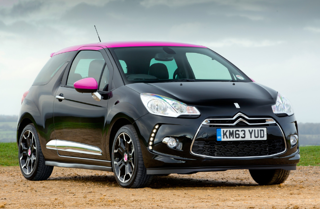TRL head of transport psychology Shaun Helman and sustainable travel lead Scott Davidson explain how fleet managers can use a range of psychology interventions to change the way drivers behave

The challenge: as an industry, we have known for decades that 95% of road collisions have at least one contributing driver behaviour or human error factor.
However, while driver behaviour is often identified as the problem, rarely do academics, marketers or fleet managers take it one step further and answer the question ‘what are we going to do about it?’.
While not professing to have all the answers, this article does at least seek to frame a possible solution.
Take as a starting point the term ‘driver behaviour’. A broad, catch-all description, this covers a multitude of possibilities such as: errors; intentional and unintentional violations; deliberate risk taking; aggression; impairment due to fatigue; drugs or alcohol; distraction and lack of good hazard anticipation skills to name just a few.
In other words, saying that ‘driver behaviour’ is the problem when trying to reduce road collisions is like saying ‘pathogens’ are the problem when treating malaria; it just isn’t specific enough.
Back in 2011, we undertook a review of studies that have properly evaluated interventions that seek to improve work-related road risk (Grayson & Helman, 2011).
We found almost none. However, we do know that some companies have had success with so-called ‘holistic’ approaches, often involving training, education, organisational changes, technology to monitor drivers, incentives and things like ‘pledges’.
We also know that other companies have tried similar approaches without much success.
Of course, the companies that have success are more likely to shout about it than those that do not!
Luckily, there is some good news.
We also found in our review that, as an industry, we understand the broad risky behaviours that fleet operators need to try and control.
To continue with the medical analogy, we know which pathogens are to blame. These are distracted driving, speeding and fatigued driving.
Individual fleet operators may have specific risks beyond these – for example fleet companies operating HGVs in London and other large cities need to pay special attention to cyclist and pedestrian safety – but, broadly, these are the three behaviours that should be targeted first in any intervention.
The bad news is that, while there is some interesting science out there to help us design interventions, there is nothing ‘off the shelf’ that is known to work in the same way for every fleet.
So, what should you do? At TRL, our group of behaviour scientists have settled on the following list of specific intervention goals that any fleet manager should work through when starting out:
- Make sure you have data on behaviours, collisions and near misses; you cannot manage what you do not measure.
- Have a risk management system based on ‘plan-do-check-act’ (see HSE Guidance INDG382).
- Reduce the amount of driving people do by using technology and smart meeting planning.
- Schedule necessary driving so that it avoids the peak periods for sleepiness (2-6am and 2-4pm).
- Have a policy that requires drivers not to use their mobile device while driving.
- Allow sufficient time for journeys to remove time pressure.
After this, it is a case of applying knowledge about behaviour change and psychology. Again, there are no off-the-shelf solutions, but there are some general principles.
For example, using a ‘threat appeal’ in campaigns (such as showing people a video of a ‘hard-hitting’ collision scene caused by distracted driving) is not enough to promote behaviour change.
While the fear someone feels on seeing the campaign might make them engage with the message, such campaigns also need to present people with plausible alternative behaviours they can use to reduce the threat.
The campaign also needs to be compatible with your policies. Even if your campaign on distracted driving manages to engage people, if your policy requires people to be contactable by phone while driving, then the behaviour required to reduce the risk (not using the phone) is no longer plausible.
People will control the fear they feel through maladaptive behaviour, making excuses like ‘I am highly skilled; I’ll be ok’, rather than changing the behaviour (Witte, 1992).
Some other key techniques which have been shown to work in other sectors, such as health and sustainability, include maximising social norms, incorporating group discussion and focusing on feedback.
Make safe behaviour appear ‘normal’ in your campaigns. People like to ‘fit in’ with what is normal so, rather than highlighting the fact that lots of people admit to using their phone occasionally, why not highlight the fact that, at any point in time, the clear majority of people do not use their phone while driving?
Social norms are most effective when the example is closely matched to the target audience, e.g. if you want your young, male fleet driver to tailgate less, show them examples of other young, male fleet drivers who keep a safe distance.
The classic study usually discussed here is of hotel towels (Goldstein, Cialdini and Griskevicius, 2008). A hotel was trying to get its customers to re-use towels, rather than cleaning all towels from every room every day. It would reduce their costs and be good for the environment by saving energy and water at the same time.
The study tested the effectiveness of three in-room messages which read:
1 Help save the environment. You can show your respect for nature and help save the environment by reusing your towels during your stay.
2 Join your fellow guests in helping to save the environment. In a study conducted in Fall 2003, 75% of the guests participated in our new resource savings programme by using their towels more than once. You can join your fellow guests in this programme to help save the environment by reusing your towels during your stay.
3 Join your fellow guests in helping to save the environment. In a study conducted in Fall 2003, 75% of the guests who stayed in this room (#xxx) participated in our new resource savings programme by using their towels more than once. You can join your fellow guests in this programme to help save the environment by reusing your towels during your stay.
Statement 2 resulted in a 26% increase in towel re-use over statement 1; statement 3, with a subtle change compared to statement 2, was even more successful and resulted in a 33% increase in towel re-use.
The lesson is that social norms are powerful, so getting your messaging right and delivered by target audience peers, is important.
If a training provider doesn’t incorporate group discussion among the target audience and instead ‘educates from the blackboard’, question their effectiveness.
Group discussion has been shown to be effective in changing habits towards new target behaviours through bringing automated behaviours into conscious awareness.
All the great behaviour change programmes, from Alcoholics Anonymous to Weight Watchers to Eco Teams use measurement and feedback, often in a social setting in front of peers so progress is celebrated and supported (Davidson, 2011).
Seeing and sharing our progress appears to be important to maintaining that development.
The inclusion of social psychological tools like those above is helpful, but their application is not always straight-forward.
To apply behavioural science properly to the change you’re trying to achieve, it is important, therefore, to engage with independent expert advice to choose the approach that is right for your circumstances.
For example, TRL’s Eco Stars programme, a fleet efficiency programme proven to significantly improve fleet operational efficiency through behaviour change, uses several these tools, but tailors each appropriate to the context, and to the company engaged.
Likewise, other psychological tools are also available for fleet managers, including point of choice reminders, implementation interventions, gamification and the use of social contracts.
The most important factor when undertaking any form of behavioural change within an organisation is understanding what you want to achieve, by when and how you are going to measure success.
Benchmarking and evaluation are critical to demonstrating that the interventions in which you have invested have worked.
• INDG382 - http://www.hse.gov.uk/pubns/indg382.pdf
• Davidson, S. (2011). Upscaling social behaviour change programmes, in Whitmarsh, O’Neill and Lorenzoni (ed.) Engaging the public with climate change, London: Earthscan.
• DfT (2015). https://www.gov.uk/government/uploads/system/uploads/attachment_data/file/406723/seatbelt-and-mobile-use-surveys-2014.pdf
• Goldstein, N J, Cialdini, R B, and Griskevicius, V (2008). A Room with a Viewpoint: Using Social Norms to Motivate Environmental Conservation in Hotels. Journal of Consumer Research 35(3), 472-482Grayson, G B and Helman, S (2011). Work related road safety: a systematic review of the literature on the effectiveness of interventions. Research report 11.3. Institute of Occupational Safety and Health.
• RAC (2016). http://www.rac.co.uk/pdfs/report-on-motoring/rac-report-on-motoring-2016.pdf
• Sabey, B E, & Taylor, H (1980). The known risks we run: The highway. TRRL Supplementary Report 567. Crowthorne, UK: Transport and Road Research Laboratory (TRL).
• Witte, K. (1992). Putting the fear back into fear appeals: The extended parallel process model. Communications Monographs, 59(4), 329-349





















Robert Gifford - 18/01/2017 16:58
I like the reference to hotel towels. However, why do hotels ignore their own requests? I always leave mine on the rail but it still gets changed!